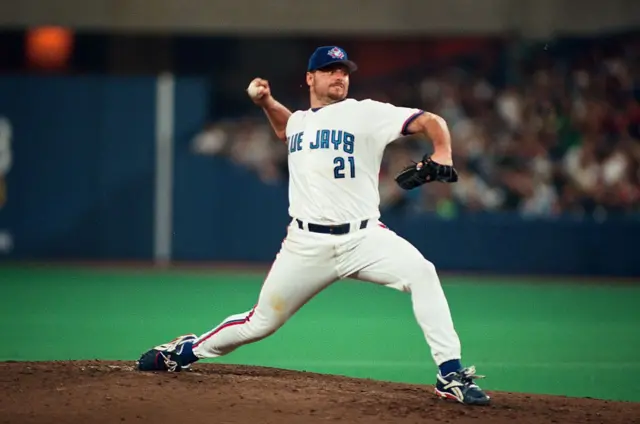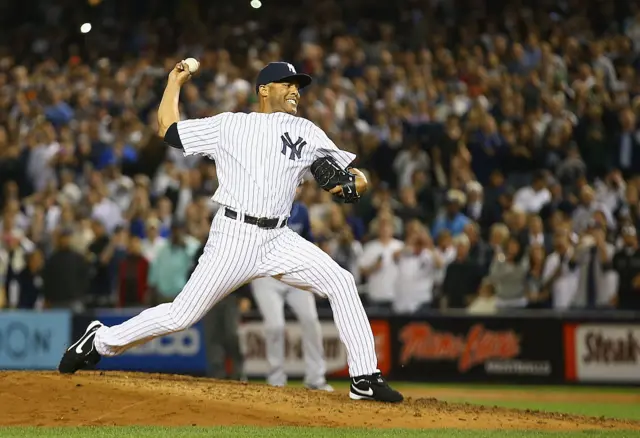What are relief pitchers?published at 16:16 BST 6 September
 Image source, Getty Images
Image source, Getty ImagesRoger Clemens, one of the best starting pitchers in MLB history, played for both the Yankees and Blue Jays
This week Reuben in Glasgow got in touch with the Ask Me Anything team with a question about pitching:
"Why do baseball teams never bring on a starting pitcher instead of a reliever at the end of a game to close out a victory? Surely the starting pitchers are the best pitchers and would have the best chance of recording an out."
The answer lies in the difference between starting and relief pitchers.
Starting pitchers are built for endurance. They typically throw up to 100 pitches from the start of the game, aiming to get their team towards the later innings without giving up significant numbers of runs.
If they are successful, a manager will usually remove them around the 100-pitch mark to protect them against injury and any decrease in performance.
Starting pitchers' bodies go through significant stress every game. They have to manage their energy while pitching and then rest for several days after each outing.
 Image source, Getty Images
Image source, Getty ImagesYankees legend Mariano Rivera is widely recognised as one of the greatest relief pitchers of all time.
Relief pitchers are built for quick stints and special situations. They come in for a starter ideally later in the game to preserve a lead.
Relief pitchers will make far fewer pitches, often only working for an inning or two before they are removed. Unlike starters they do not need to preserve their energy and can throw at maximum velocity from the outset. They also do not require as much rest and can be called on for three or four days in a row.
While starting pitchers are all-rounders with a variety of different pitches in their arsenal, relief pitchers are specialists. For example, on each roster there are relief pitchers known as closers, whose job is to come in when the pressure is on at the end of the game to secure the last few outs and the win for the leading team.
Very occasionally a team will look to a starting pitcher to act as a relief pitcher. It usually only happens late in the regular season or in the post-season when a team is desperate for a win and the risk of over-working a starting pitcher is outweighed by the importance of the situation.

